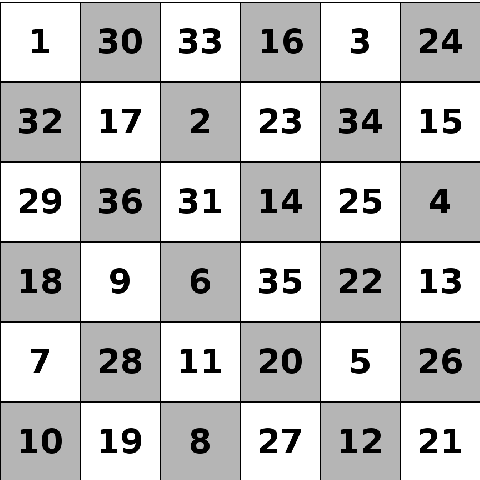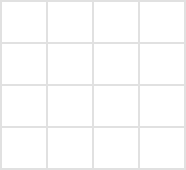Problems
On the questioners’ planet, there are two types of aliens, Cricks and Goops. These aliens can only ask questions. Cricks can only ask questions to which the answer is yes, Goops can only ask questions to which the answer is no.
There are 19 aliens standing in a circle. Each of them asks the following question “Do I have a Crick standing next to me on both sides?" Then one of them asks you in private “Is 57 a prime number?" How many Cricks were actually in the circle?
Suppose that \(n\) is a natural number and \(p\) is a prime number. How many numbers are there less than \(p^n\) that are relatively prime to \(p^n\)?
Two players are playing a game with a heap of \(100\) rocks, and they take turns removing rocks from the heap. The rules are the following: the first player takes one rock, the second can take either one or two rocks, then the first player can take one, two or three rocks, then the second can take \(1\), \(2\), \(3\) or \(4\) rocks from the pile and so on. That is, on each turn, the players have one more option for the number of rocks that they can take. The one who takes the last rock wins. Who has the winning strategy?
Find the minimal natural number \(n>1\) such that \(n^6 - 2n^5 - n^4 + 4n^3 - n^2 - 2n +1\) is divisible by \(2025\).
In chess, knights can move one square in one direction and two squares in a perpendicular direction. This is often seen as an ‘L’ shape on a regular chessboard. A closed knight’s tour is a path where the knight visits every square on the board exactly once, and can get to the first square from the last square.
This is a closed knight’s tour on a \(6\times6\) chessboard.

Can you draw a closed knight’s tour on a \(4\times4\) torus? That is, a \(4\times4\) square with both pairs of opposite sides identified in the same direction, like the diagram below.

Prove that one can tile the whole plane without spaces and overlaps, using any non self-intersecting quadrilaterals of the same shape. Note: quadrilaterals might not be convex.
Let \(n\) be a positive integer. We denote by \(s(n)\) the sum of the divisors of \(n\). For example, the divisors of \(n=6\) are \(1\), \(2\), \(3\) and \(6\), so \(s(6)=1+2+3+6=12\). Prove that, for all \(n\ge1\), \[\sum_{k=1}^ns(k)=s(1)+s(2)+...+s(n)\le\frac{\pi^2}{12}n^2+\frac{n\log n}{2}+\frac{n}{2}.\]
It is impossible to completely tile the plane using only regular pentagons. However, can you identify at least three different types of pentagons (each with at least two different corresponding sides AND angles) that can be used to tile the plane in three distinct ways? Here essentially different means the tilings have different patterns.
Draw how to tile the whole plane with figures, made from squares \(1\times 1\), \(2\times 2\), \(3\times 3\), where squares are used the same number of times in the design of the figure.
Consider a line segment of length \(3m\). Jack chose \(4\) random points on the segment and measured all the distances between those \(4\) points. Prove that at least one of the distances is less than or equal to \(1m\).